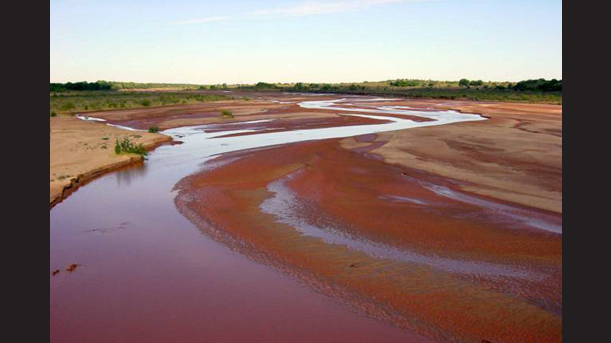Farm & Ranch
Red River Crops Conference set for Jan. 27-28 in Childress

By: Kay Ledbetter
Writer: Kay Ledbetter, 806-677-5608, [email protected]
Contacts: Stan Bevers, 940-552-9941, [email protected]
CHILDRESS – Texas and Oklahoma officials along the Red River will address the issues of importance to regional farmers and ranchers on both sides of the state line at the annual Red River Crops Conference on Jan 27-28.
The two-day event is designed to provide crop production information for Southwest Oklahoma and the Texas Rolling Plains, said Stan Bevers, Texas A&M AgriLife Extension Service agricultural economist in Vernon.
The event will begin with registration from 7:45-8:15 a.m. Jan. 27 and continue through 4:15 p.m. on each day at the Fair Park Auditorium, 1000 Commerce St. in Childress, Texas.
Preregistration by Jan. 23 is encouraged, Bevers said. The fee is $25 for one or both days.To register, print the form from http://agrisk.tamu.edu/. Make checks payable to the Red River Crops Conference and mail to 100 N.W. Ave. E, Courthouse Box 9, Childress, TX. 79201-2351.
In-season and summer crops will be featured on Jan. 27. Discussion topics will include a long-term weather forecast, canola and other specialty crops, a discussion of the 2014 farm bill decisions, wheat management, stocker cattle and a market outlook.
Cotton will be featured on Jan. 28, with topics including market outlook, variety discussions, herbicide options, seed treatments and disease management, irrigation and new technology from industry representatives.
Bevers said AgriLife Extension and Oklahoma Cooperative Extension joined together to conduct the first and “very successful” conference last January. The conference alternates between Oklahoma and Texas.
In the Red River region, obstacles can include limited water and land resources, and weather extremes, such as hot and dry summers and bitterly cold winters, he said. Producers also find themselves managing pastures of both introduced and native grass for cattle operations, and crop mixes such as cotton, wheat, and grain and forage sorghum. More recently, producers have considered incorporating canola, guar and sesame into their production.
For more information, contact a local Extension office in either Texas or Oklahoma, or call Bevers at 940-552-9941, extension 225.
-30-
Farm & Ranch
Ag Elsewhere: Wyoming

By Tressa Lawrence
Babies are tucked away in every nook and cranny. Many ranchers across Wyoming have baby animals popping up all over this time of year.
Farm & Ranch
Ag Elsewhere: Montana

By Lindsey Monk
Another load of grain in to keep feeding the calves until the green grass can really start popping.
Farm & Ranch
Meanwhile, Back at the Ranch….

By Rayford Pullen | [email protected]
Spring has sprung and hopefully the rains will continue where our country will heal from the previous droughts and our grasses will thrive. We are especially hopeful for the Panhandle of Texas where our neighbors and friends have been dealt a deadly blow to homes, ranges, livestock, and people. Keep them in your prayers as they will not be able to return to normal for many years if at all. Having lost their ability to benefit from this great cattle market is a double whammy for all of them.
Now is the time of year when we need to take care of business as it relates to our new calves that have been hitting the ground this spring. First and foremost is vaccinating for Blackleg followed by deworming with a white wormer and the IBR complex. Blackleg is a soil-born disease and with pastures extremely short this spring our calves have been grazing the green grass as soon as it shows itself, making them even more vulnerable to picking contaminates from the soil.
To read more, pick up a copy of the April issue of NTFR magazine. To subscribe by mail, call 940-872-5922.
-

 Country Lifestyles1 year ago
Country Lifestyles1 year agoScott & Stacey Schumacher: A Growth Mindset
-

 Equine7 months ago
Equine7 months agoThe Will to Win
-

 Country Lifestyles7 years ago
Country Lifestyles7 years agoStyle Your Profile – What your style cowboy hat says about you and new trends in 2017
-

 Country Lifestyles4 years ago
Country Lifestyles4 years agoAmber Crawford, Breakaway Roper
-

 HOME7 years ago
HOME7 years agoGrazing North Texas – Wilman Lovegrass
-

 Country Lifestyles7 years ago
Country Lifestyles7 years agoDecember 2016 Profile, Rusty Riddle – The Riddle Way
-

 Country Lifestyles8 years ago
Country Lifestyles8 years agoJune 2016 Profile – The man behind the mic: Bob Tallman
-

 Country Lifestyles8 years ago
Country Lifestyles8 years agoCowboy Culture with Clay Reid – Being a Man






